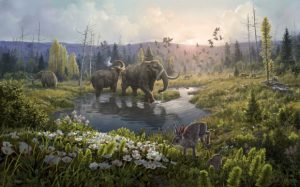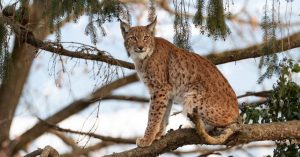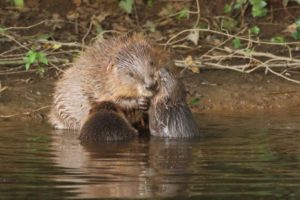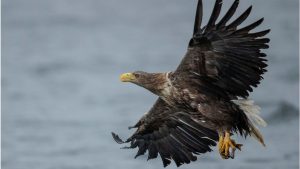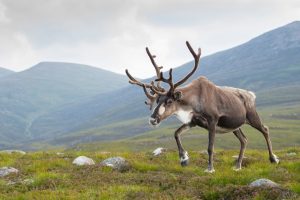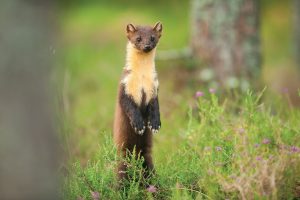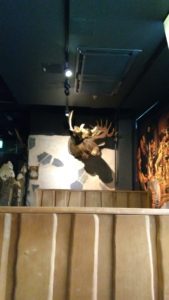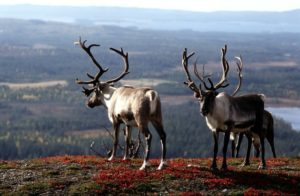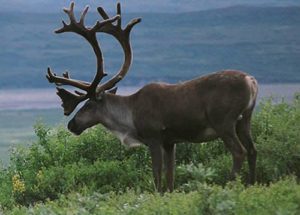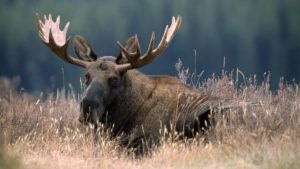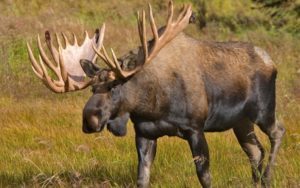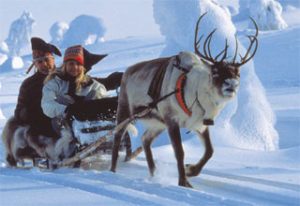Podcast: Play in new window | Download (Duration: 13:45 — 15.0MB)
Sorry to my Patreon subscribers, since this is mostly a rerun episode from April 2019. It’s a fun one, though!
The teensy pumpkin toadlet [photo by Diogo B. Provete – http://calphotos.berkeley.edu, CC BY-SA 2.5, https://commons.wikimedia.org/w/index.php?curid=6271494]:
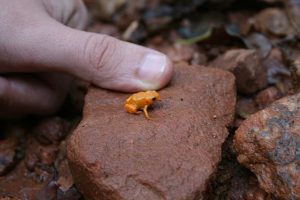
The electromagnetic spectrum. Look how tiny the visible light spectrum is on this scale! [By NASA – https://science.nasa.gov/ems/, Public Domain, https://commons.wikimedia.org/w/index.php?curid=97302056]:
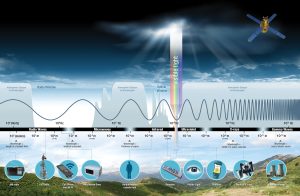
Show transcript:
Welcome to Strange Animals Podcast. I’m your host, Kate Shaw.
This was supposed to be the 2023 discoveries episode, but not only have I had a really busy week that’s kept me from finishing the research, I’m also coming down with a cold. My voice still sounds okay right now but considering how I feel, it’s not going to sound good for long, and I need to finish the March Patreon episode too! I decided to rerun a very old Patreon episode this week to allow me time to finish the March Patreon episode before my voice turns into an unintelligible croak. I did drop in some fresh audio to correct a mistake I made in the original episode and add some new information.
This is one of my favorite Patreon episodes and I hope you like it too. It’s about animals that can see ultraviolet light.
I was going to make this a frog news episode, but I started writing about a tiny frog from
Brazil called the pumpkin toadlet and the episode veered off in a very interesting direction. But let’s start with that frog.
It’s called the pumpkin toadlet because it’s an orangey-yellow color that is just about the same color as pureed pumpkin. It’s poisonous and lives in the forests of Brazil. During mating season, the pumpkin toadlet comes out during the day, walking around making little buzzing noises. Researchers assumed those were mating calls until they started studying how the pumpkin toadlet and its relations process sounds. It turns out that the pumpkin toadlet probably can’t even hear its own buzzing noise. But they did discover that the pumpkin toadlet fluoresces brightly under UV light.
We’ve talked about this phenomenon before, back in the Patreon episode about animals that glow. Quite a lot of frogs turn out to fluoresce in ultraviolet light, which is a component of daylight. That explains why the pumpkin toadlet comes out during the day in mating season. It wants to be seen by potential mates. It’s actually the frog’s bones that fluoresce, but since it has very thin skin without dark pigment cells, the ultraviolet light can light up the bones.
I wanted to make sure I gave everyone the correct information about ultraviolet light, so I started researching it…and that led me down this rabbit hole. What animals can see in ultraviolet light? Can any humans see ultraviolet light? What does it look like?
Light is made up of waves of varying lengths. The retina at the back of your eyeball contains two types of cells, rods and cones, which are named for their shapes. Rods are for low-light vision and cones are for detail and color vision.
Humans have more cones than rods because we’re diurnal animals, meaning we’re most active during the day. Animals that are mostly nocturnal have more rods than cones, which help them see in low light although they don’t see color as well or sometimes at all as a result.
Most humans can see any color that’s a mixture of red, green, and blue, since we have three types of cone cells that react to wavelengths roughly equivalent to those three colors. Some people have what’s called red-green color blindness, which means either the person doesn’t have cones that sense the color red or cones that sense the color green. Various shades of green and red look alike for these people. Red-green color blindness is much more common in men than in women, with as many as 8% of men having the condition. A lot of times they don’t even know it. When I did my student teaching in a first grade class, one day I prepared a math lesson for the students that involved them sorting a little cup of candy into colors, and after they did the math problems associated with the different colors, they got to eat the candy. One little boy kept sorting certain colors of Skittles into the same column, and when I asked him, he didn’t realize they were different colors. They looked the same to him. So that day I learned to be careful about what kind of candy I used for sorting lessons, and he learned that he had red-green color blindness. My own dad was color blind too. It’s pretty common. Occasionally a person is born without the ability to see colors at all, but that’s extremely rare.
The visible light spectrum, also sometimes called the color spectrum, runs from violet to red. Just below violet is the wavelength referred to as ultraviolet. Many insects and birds can see ultraviolet, but typically an animal that can see ultraviolet can’t see infrared, which is the wavelength of light just past red. Birds that can see ultraviolet can usually see red, but not infrared.
In the original Patreon episode, this is where I said that humans can see ultraviolet light a little, but I was actually wrong. I thought blacklights worked by allowing us to see ultraviolet light, but that’s not the case. Blacklights are lamps that emit mostly ultraviolet light, but we only see a dark purple or blue that the blacklight’s filter allows through. While very few humans can see anything but the purple or blue, insects can see ultraviolet light and are attracted to it. That’s why bug zappers include blacklights. People also like blacklights because the ultraviolet light makes some things glow, which is fun to play with. It can also be useful in surprising ways. A lot of countries print paper money and other important documents with ink patterns that only show up under ultraviolet light. It’s easy to tell if the money or document is a fake if those hidden patterns don’t glow under a blacklight. Some diseases cause the sick person’s urine to glow specific colors under ultraviolet light, which helps a doctor determine what’s wrong with the person so they can be treated. If you have access to a blacklight, remember that even though you can’t see most of the light it emits, it can still hurt your eyes, so don’t stare into it.
Sometimes a person’s eye is diseased or damaged so they have to have the lens replaced with an artificial lens. Very rarely when that happens, the person wakes up after surgery and discovers they’re seeing ultraviolet way more than the rest of us. They report that the color is a pale purplish shade. This sounds cool, except that they have to wear special glasses that block ultraviolet light when they’re outside, since ultraviolet light can damage the eyes. It’s also the spectrum of light that causes sunburns. That’s what the UV means in products that say they block UV light; UV just means ultraviolet.
Many birds have a special cone cell that reacts specially to ultraviolet wavelengths. Urine reflects ultraviolet light, which allows predatory birds to track their prey by following urine trails. Some rodents and marsupials also have this cone cell. Researchers think having four types of cone cells, the three humans have plus the ultraviolet one, used to be the default in all animals, but some have evolved to not have the ultraviolet cone cell since they don’t need it. Some animals only have two types of cone cells, like mice, who can’t see as many colors as humans.
Researchers are just learning that many mammals are able to see ultraviolet much more than the typical human can. Reindeer, for instance, and some common animals like dogs, cats, and ferrets. Since power lines give off ultraviolet light, sometimes in bursts called coronal discharges, researchers now realize animals are affected by the light even though humans can’t see it. Reindeer have always avoided power lines, and now we know why. To them, the coronal discharges are a blaze of bright color that probably hurts their eyes, especially when it reflects off snow. Conservationists are calling for better shielding on power lines to cut down on the light they give out.
Some humans are born with ultraviolet-sensing cone cells, a condition called tetrachromacy. Since the lens of the human eye naturally filters out most ultraviolet light, people can have this extra cone cell and not even know it. They just tend to be better at differentiating colors than people without it. Some studies suggest that as many as 50% of women and 8% of men may be tetrachromatic—and that tetrachromatic women are also carriers of the trait of red-green color blindness. Since my dad was colorblind, that means I carry that trait from the genetic material I inherited from him, but I see colors really well…so maybe I have those extra cone cells! That’s exciting! Maybe you have it too!
But before we all get too excited, think about the mantis shrimp. Instead of four types of cone cells, it has up to 16 types.
Ultraviolet lightwaves are short. Shorter than that are X-rays, and shorter than those are gamma rays, which are ridiculously teeny. If your eyes could see X-rays, it basically just means you’d see a lot of skeletons walking around and it would feel bright all the time even if you closed your eyes, since X-rays penetrate less dense material like skin. If you could see gamma rays, all it would mean is that you could see stuff that was radioactive. Useful, yes, but not everyday useful.
Infrared is a different case, since infrared wavelengths are extremely long. Some animals can see infrared, but mostly they actually sense heat signatures given off by other animals. Night vision goggles work like this, basically allowing whoever wears them to see in infrared. Wavelengths longer than infrared are microwaves and radio waves, which nothing can see because it would pretty much just overwhelm the vision and you could see nothing but light, much of it the afterglow of the Big Bang, when the universe came into being.
A few years ago, a team of scientists working with an infrared laser started reporting occasionally seeing flashes of light where there shouldn’t be visible light. They were scientists, so of course they investigated with a scientific study of the infrared laser on human vision. This was a powerful laser that only emitted infrared light, and emitted it in quick pulses that released a set number of photons at a time. A photon is one particle of light, something along the lines of an atom. I’m not a physicist and don’t really understand it. The study revealed that sometimes, when the laser’s pulses were extremely close together, two photons would be absorbed by a single photopigment in the eye, which was enough to activate the pigment and allow the person to see a flash of light. But because the eye combined the photons, the eye reacted as though the wavelength of the light was half its length, which made it look green.
By the way, rod cells, the ones that help us see in low light, take a few minutes to achieve full sensitivity. That’s why it takes a few minutes for your eyes to adjust after you turn the light out at night.
It’s mind-blowing to think that light is an actual physical thing that actually physically goes into your eyeballs to let you see. There’s more to it than that, of course—nerves and the brain have a lot to do with how we are able to make sense of visual images. If something goes wrong with the eyeball, the nerves that connect it to the brain, or the part of the brain that deals with vision, it can lead to blindness of one kind or another. But at the very basic level, when you see, for instance, a hedgehog, it’s because light photons bounced off that hedgehog and into your eyeball. And that also means that when you look up at the night sky and see stars, you’re seeing the actual physical lightwaves given off by stars millions of light years away that physically go into your eyeball and bounce off the cone and rod cells, activating them and allowing your brain to form an image. That’s amazing, no matter if you can see ultraviolet or if you get the colors of candy mixed up because they look alike to you.
You can find Strange Animals Podcast at strangeanimalspodcast.blubrry.net. That’s blueberry without any E’s. If you have questions, comments, or suggestions for future episodes, email us at strangeanimalspodcast@gmail.com. We also have a Patreon at patreon.com/strangeanimalspodcast if you’d like to support us for as little as one dollar a month and get monthly bonus episodes.

